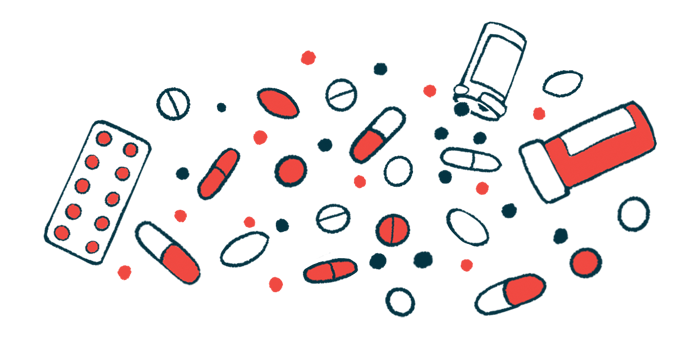Epilepsy Medication Use Weighs on Patients’ Quality of Life, Study Finds

People with Parkinson’s disease who use medications for epilepsy reported a poorer quality of life on questionnaires than did those who do not, a study reported.
Quality of life (QoL) was also lower in those who used a higher number of medicines to treat the disease’s non-motor symptoms.
“Physicians should be aware that in PD [Parkinson’s disease] patients on anti-epileptic drugs there is room for QoL improvement, for example by optimizing the condition it was prescribed for, or by the management of side effects,” the researchers wrote.
The study, “The Impact of Non-dopaminergic Medication on Quality of Life in Parkinson’s Disease,” was published in the journal Clinical Drug Investigation.
The primary treatment for Parkinson’s disease is dopamine replacement therapy, which controls motor symptoms by replacing dopamine, the signaling molecule in the brain responsible for coordination and movement. Its levels progressively decrease due to the ongoing loss of dopamine-producing nerve cells.
As the disease progresses, additional medications may need to address comorbidities (co-existing conditions) related to Parkinson’s, including non-motor symptoms such as sleep problems, constipation, and mood disorders. Therapies to treat aging-related conditions, like cardiovascular disease and diabetes, may also be required.
However, the relationship between these extra, non-dopamine medications and life quality has rarely been investigated.
Researchers at the Medisch Spectrum Twente hospital in the Netherlands addressed this unknown by analyzing questionnaire-based data collected from people enrolled in Medication Review in Parkinson-trial (Netherlands Trial Register; NL4360), a study which examined the effect of a structured medication review by community pharmacists on patient quality of life.
“A better understanding of the impact of different non-dopaminergic drugs will help in selecting the most appropriate future pharmacological interventions,” the team wrote.
Eligible patients were using at least four different medications with at least four daily treatments, regardless of which medication and when taken. They also had to be able to administer the medication.
Life quality, physical disability, and non-motor symptoms were assessed using six questionnaires, given at the beginning of the study (baseline) and three and six months later. Information on medication use was collected from patients and confirmed by pharmacists. Parkinson’s severity was measured by Hoehn and Yahr (HY) stage, with higher stages reflecting greater disability.
Researchers used the Rx-Risk comorbidity index tool, which estimated the prevalence of 43 comorbidities based on medicine prescriptions, generating a total combined comorbidity score ranging from 1 to 10.
The relationship between non-dopamine medications and QoL was the study’s primary goal. Additional outcomes included the influence of patient characteristics on quality of life, such as sex, HY stage (severity), disease duration, number of daily medicines, number of daily administrations, comorbidity score, and number of non-motor symptoms.
Data was collected from 209 Parkinson’s patients, with a mean age of 72.5 and a mean disease duration of 6.7 years, of whom 127 (60.8%) were male. Their average comorbidity score was 4.6.
Patients had up to nine different comorbidities based on medication use, with gastroesophageal reflux disease (GERD) occurring in 100 (47.8%) individuals. Medications reflecting cardiovascular comorbidities were also frequent, such as those to treat high levels of fat- and fat-like molecules (lipids) in the bloodstream, high blood pressure, chronic heart failure, as well as antiplatelet therapies to prevent blood clotting.
Multiple Rx-Risk comorbidities related significantly to a lower QoL, as measured by the Parkinson’s Disease Questionnaire-39 (PDQ-39), with scores range from 0 to 100. Higher scores indicated a worse quality of life.
Participants who used depression-related medications had a lower QoL score compared with those without depression (41.9 vs. 34.6), along with those with and without epilepsy (44.9 vs. 34.7), and GERD (38.5 vs. 33.6). Patients who used medicines for high blood pressure reported a higher life quality score than those who did not (32.6 vs. 37.6).
Statistical analysis found female sex and a higher HY stage were significantly associated with a poorer QoL. There was a moderate association between a lower QoL and the number of non-motor symptoms, based on the Non-Motor Symptoms Questionnaire (NMSQ).
A weak correlation was seen between poorer quality of life and longer disease duration, and the use of more medicines per day. No connection between QoL and the number of Rx-Risk comorbidities based on the total comorbidity score was reported.
After adjusting for patient characteristics — including age, sex, disease duration, and severity, the number of daily medications, and comorbidity score — associations with QoL were explained by female sex, disease severity, number of non-dopaminergic medications, NMSQ, and the use of anti-epilepsy therapies.
Final analysis revealed only the use of anti-epilepsy treatments was independently linked with a poorer QoL.
Further examination of the number of prescriptions used in an outpatient setting that may worsen Parkinson’s symptoms (contraindicated) showed out of 1,551 prescriptions, six (0.4%) were to be avoided, replaced, or needed monitoring. This included therapies for irregular heartbeat, seizures, and migraine headaches, as well as antipsychotics.
“Higher numbers of non-dopaminergic drugs were correlated with impaired QoL,” the researchers concluded. “However, when grouped into categories, only the use of anti-epileptic drugs had a negative association with QoL.”
Still, “it is likely that the burden of PD itself is a big contributor to worse QoL, with both higher HY stage and more non-motor symptoms being negatively related,” they added. “Therefore, improving treatment of symptoms regarding the PD spectrum remains of high importance for all healthcare professionals.”







